About Tom
Growing Up in Fayetteville Arkansas
Tom Butt was born in Albuquerque, New Mexico, in 1944 just before his father departed for France in World War II. He grew up in Fayetteville, AR, one of three brothers. Tom’s father, Judge Thomas F. Butt, served as an Arkansas Chancery and Probate Judge for 50 years, longer than any other judge in Arkansas history. He was also a U.S. Army Reserve officer, rising to the rank of brigadier general and the mobilization position of Chief Judge, U.S. Army Judiciary. Tom’s mother was a librarian in the Fayetteville Public Library.
Tom attended public schools in Fayetteville, graduating from high school in 1962. He participated in Boy Scouts and played baseball, football and basketball. He enjoyed art, camping, swimming and fishing. Tom was also a scholar, finishing high school as a National Merit Scholarship Finalist.
Summers in high school were spent working for the Washington County Highway Department, repairing bridges, patching pavement and laying asphalt.
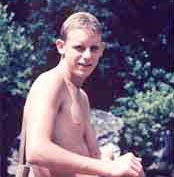
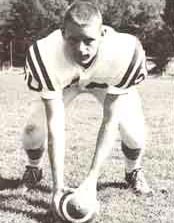
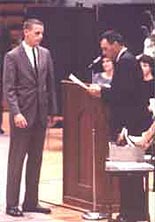
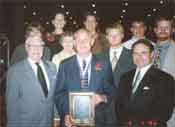
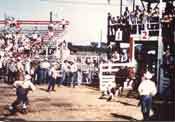
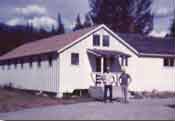
Tom attended the University of Arkansas from 1962 to 1967 graduating with a Bachelor of Arts degree and a Bachelor of Architecture degree in 1968.
In 1962, Tom worked on a fire crew in the Kootenai National Forest in Montana.
During summers, Tom worked, first, for the U.S. Forest Service on a fire crew in the Kootenai National Forest in Montana. For four more summers he worked as a Student Trainee Architect for the Western Service Center of the National Park Service. He spent two summers in Yellowstone National Park, one summer in Hawaii and one summer in San Francisco.
Military Service
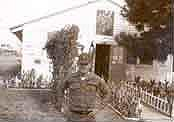
Ft. Polk, LA

Long Binh, Vietnam (1969)
Tom was commissioned a 2nd lieutenant in the U.S. Army Corps of Engineers in 1967 after completing advanced ROTC at the University of Arkansas.
He attended the U.S. Army Engineer Officer Basic Course at Ft. Belvoir, VA, from February to April 1968, and graduated with the MOS (Military Occupation Specialty) 1331, Combat Engineer Unit Commander. In April 1968. Butt was assigned to Ft. Polk, LA, where he served the remainder of 1968 as a Basic Combat Training Officer. In late 1968,
he was transferred, with other architects and planners, to a special master plan team to help prepare a plan for Ft. Polk to become a permanent military post.
In March, 1969. Lieutenant Butt arrived in Vietnam, where he served the remainder of 1969 and early 1970 as Liaison and Assistant Operations Officer with the Headquarters of the 159th Engineer Group at Long Binh. The 159th was part of the 20th Engineer Brigade serving the south half of Vietnam. Under the 159th were four engineer battalions, the 34th, 46th, 92nd and 169th, as well as the 100th Bridge Company.

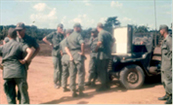
The 159th Engineer Group operated in the area west and south of Saigon and was involved primarily in road and bridge building, construction of fire bases, air bases and cantonment facilities and land clearing. The 159th also operated all the rock quarries in the southern half of Vietnam.
Leaving the Army and Vietnam in March of 1970, Butt was awarded the Bronze Star and the Army Commendation Medal as well as the Vietnam Campaign Medal, the RVN Campaign Medal and the National Defense Service Medal.
Tom’s memoir of his Army service, “An Architect Goes to War: To Vietnam and Back,” is available on Amazon.
The Introduction includes:

 For thirty years after 1970, I thought little about my experiences in the Army and especially my year in Vietnam.
For thirty years after 1970, I thought little about my experiences in the Army and especially my year in Vietnam.
After my father died in 2000, I found all the letters I had written home to my parents from Vietnam in 1969-70. I thought it would be a worthwhile project to transcribe them as a chronicle of one person’s experience in a war that has become a metaphor.
This project evolved into a memoir centered around my military experiences that roughly span the years 1962, when I first was required to enroll in ROTC at the University of Arkansas, through the conclusion of a journey across half the world in 1970 that began when I was discharged from the Army in Vietnam.
Over the years, I have added appendices that describe the experiences of others who crossed my path and included my journal from a trip Shirley and I took to Vietnam, Cambodia and Thailand in 2009.
Over the years, I have read dozens of books that constitute the memories of Vietnam veterans. Most were written by men who served in combat units and recall endless combat assaults, combat patrols and firebase defense, or by helicopter pilots who largely supported these combat units. I have great respect for these soldiers whose jobs were dirty, dangerous and often deadly. Of the 2.7 million Americans who served in uniform in Vietnam, approximately 40%, or a little over a million, served in combat units, but I was not one of those. My story is not one of heroics. I was one of the other 1.7 million in a support role that not so much has been written about, although I have come across books by nurses, engineers and MPs. I just did the job I was given and did it well.
Unlike the common perception that Vietnam was all death and danger, I found my one-year tour to be fascinating and professionally engaging. I did not pick my job; it was simply what I ended up being assigned to do, and I was luckier than many. I never slept on the ground or even in a tent, humped the boonies or fired my weapon. I was part of the Army engineer effort that at the height of the war constituted about 10 percent of Army troops serving in Vietnam, organized into two brigades, six groups and 28 construction and combat battalions.
By 1969-70, our engineer group, the 159th, was largely engaged in building infrastructure – roads and bridges – as well was land clearing to protect roads and highways from attack. And we were preparing to turn that effort over to the Vietnamese (“Vietnamization”).
When the topic of the Vietnam war comes up, one question is always out there. Why did you go? The reality is that I, like the overwhelming majority of those who served, were simply swept up by events. Most of our fathers served in WW II, at the time only about 20 years in the past. Military duty was something you just did. My father joined the Army Reserve after serving in Europe in WW II and retired 34 years later in 1970 as a brigadier general in the Judge Advocate General’s Corps with the mobilization designation as chief judge of the U.S. Army Judiciary, receiving the Legion of Merit. (See Appendix E).
My younger brother, Martin, served in Vietnam in 1966-67, before I was even in the Army. (See Appendix D). It turned out, for him, that the highways of Northwest Arkansas were more dangerous.
I was no different than most teenagers and young twenty-somethings who made up the bulk of soldiers in Vietnam. Mortality and politics were not big issues at the time – not nearly so much as a good party, beer and girls. Before I ended up there, I knew only a few people who had served in Vietnam previously. I knew only one person who had actually died in Vietnam
Graduate School
After two years in the Army and working for two architectural firms, Tom returned to school for a graduate degree, receiving a Master of Architecture in Urban Design from UCLA in 1973.
Family
Tom and Shirley Butt were married in 1971 in Muir Woods.
Shirley has an undergraduate degree in mathematics from the University of North Carolina where she was inducted into Phi Beta Kappa. She later received a Master of City Planning Degree from U.C. Berkeley. For several years, she worked as a computer systems analyst independent contractor, and later, she helped manage Interactive Resources.
Shirley has been involved in numerous community affairs, including serving on the Richmond Public Development Review Board, the East Brother Light Station Board of Directors, the Point Molate Restoration Advisory Board (RAB), the Urban Forest Advisory Committee and the General Plan Citizens Advisory Committee.
Tom and Shirley have two sons, Daniel and Andrew.

Andrew attended the University of Arkansas where he received his Bachelor of Architecture degree. He is a licensed architect and is a principal at Interactive Resources. Andrew and Kimberly Martin were married in April of 2001 and live in Richmond. They have two children. Andrew served on the El Cerrito Planning Commission, the Richmond Planning Commission and the Richmond Design Review Board. He also heads the Point Richmond Music Committee that puts on the Point Richmond Summer Music Festival.
Kimberly is also an architecture graduate of the University of Arkansas and received a Master Degree in Historic Preservation Architecture from U.C Berkeley. Kimberly is a principle in the design firm, Treanor.
Daniel graduated from U.C. Davis with a degree in history and political science. After two years of ski resort work Tahoe, he completed law school and passed the bar examination in 2003 and again in 2011. He is married to Sara Knight, a special education teacher. They have three children and live in Richmond. Daniel is an attorney with an office in Richmond.
Tom and Shirley both prefer outdoor activities, including hiking, canoeing and gardening. For many summers, they hiked and camped in the Sierra Nevada and the Rocky Mountains, including the Yellowstone Park back country, where Tom worked summers during his college years.
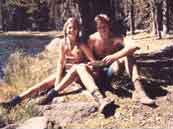
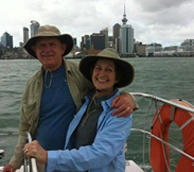
They have traveled to Europe, Asia and New Zealand. In 2009, they traveled to Vietnam, Cambodia and Thailand, revisiting many locations familiar to Tom from his Vietnam service in 1968-70.
Tom takes advantage of vacations to do pen and ink sketches. Click here for Tom’s collection of over 100 sketches.
Shirley is a member of the Richmond Garden Club and paints with watercolors as a hobby.
Because of the high fire hazards in the Point Richmond hills where they live, the Butts have acquired a small herd of goats and sheep to keep the brush down. For several years, Tom milked the goats and produced a very popular goat cheese, but that proved to be too consuming an activity.
Tom also maintains a vegetable garden and keeps bees, producing a fine Nicholl Knob mixed herb honey.
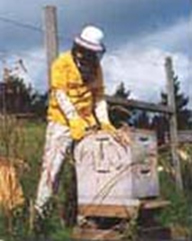
Community
Tom and Shirley Butt moved to Richmond from Marin County in 1973 attracted by the opportunity to live affordably in close proximity to San Francisco Bay. In short order, community activist Lucretia Edwards took Tom under her wing and made sure that he became involved in community affairs. Tom was elected president of the Point Richmond Neighborhood Council, became a charter member of the Richmond Community Development Commission and, later, president of the Point Richmond Business Association.
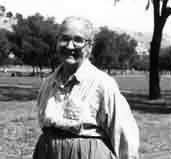
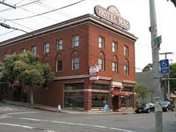
Tom and Shirley were also attracted by the economic potential of Richmond and the future of the City’s outstanding historic resources and miles of undeveloped shoreline. Between 1975 and 1980, Tom partnered with the late Jim Byers to save and rehabilitate the historic Hotel Mac, turning it into the regional attraction it is today. Tom also headed up the successful effort to nominate Point Richmond to the National Register of Historic Places and worked with the Contra Costa Shoreline Parks Committee and the U.S. Navy to place Point Molate (Winehaven Historic District) on the National Register of Historic Places.
In the late 1970s Tom founded the non-profit corporation that saved East Brother Light Station from destruction, restored it and continues to operate and maintain it as public service. East Brother lighthouse is Richmond’s oldest building and is listed on the National Register of Historic Places as well as being a California Registered Historic Landmark. For the full story of East Brother, visit the website.
In the early 1980s Tom served on the Richmond CETA Advisory Committee, chaired the Richmond Economic Development Commission, served as president of Washington Elementary School PTA, was a board member of the Masquers, chaired the Citizens Advisory Committee on Surplus School Property, chaired the Richmond Beautification Committee and chaired the Mayor’s Ad-Hoc Committee on Santa Fe Railroad and Community Relations.

Tom Butt received the U.S. Coast Guard Meritorious Public Service Award, the Coast Guard’s second highest civilian medal for restoring East Brother Lighthouse.

In the mid-1980s, Tom founded the West Contra Costa Bay Shore Council, which became a major player in Richmond City Council and mayoral campaigns, ultimately changing the course of shoreline land use from industrial to a mixed use of housing, technology, commerce and recreation.
In the late 1980s Tom served on the Citizens Advisory Committees for Richmond Shoreline Conservation and Development Strategy, the Knox Freeway-Cutting Boulevard Corridor Study, and North Richmond Shoreline Specific Plan. At the request of the Richmond Museum Association, Tom donated the services of Interactive Resources to prepare a successful nomination of the Ford Assembly Building to the National Register of Historic Places.
In the early 1990s, Tom was elected president of the Richmond Rotary Club and founded People Do! to make sure that the community would benefit from mitigations of negative impacts from the Chevron Refinery expansion and modernization projects.
When the Richmond Unified School District declared bankruptcy in 1991 and closed the schools six weeks early, Tom successfully sued the State of California to keep the schools open (Thomas K. Butt v. State of California, 4 Cal. 4th 668 (1992). Butt v. State of California, 842 P.2d 1240 (Cal. 1992).The California Supreme Court ruled that the state was responsible for the fundamental educational rights of students and that the state must take action to address a local district’s inability to provide an education basically equivalent to that provided by other districts in the state. In so ruling, the Court stated that the California State Constitution makes public education “a fundamental concern of the State and prohibits maintenance and operation of the common public school system in a way which denies basic educational equality to the students of particular districts. The State itself bears the ultimate authority and responsibility to ensure that its district-based system of common schools provides basic equality of educational opportunity.”842 P.2d at 1251.
Tom also assumed chairmanship of Herms District, Boy Scouts of America, served on the board of directors of United Concilio West and provided pro-bono architecture services for the Richmond Rescue Mission.
For his efforts to save the schools, Tom was awarded the West Contra Costa Education Fund Distinguished Citizen Award, and East Brother light Station, garnered the National Trust for Historic Preservation Honor Award and the Department of Transportation Award for Outstanding Public Service to Transportation and Historic Preservation.
Tom was also recognized with the Presidential Award for Outstanding Community Achievement of Vietnam Era Veterans. Tom is a member of the First United Methodist Church of Point Richmond where he served on the board of trustees.

Politics and Civics
In the decade of the 1990’s, Tom turned his community service experience toward political involvement, running for the Richmond City Council in 1993 and missing a seat by a mere 104 votes. Two years later, in 1995, Tom ran again and placed fourth in a race for five seats, following one of Richmond’s nastiest campaigns where he was the target of numerous hit pieces financed by Darrell Reese, the BMW and Firefighters Local 188. According the West County Times, Local 188 was the campaign’s biggest spender, using over $80,000 to defeat its “enemies,” including Tom Butt.
Tom’s 25 years between his Army service and his election to the Richmond City Council are documented in a memoir, “Richmond Citizen Architect: 25 Years (1970-1995) of Politics, Architecture, Advocacy and family,” available on Amazon.
From the book introduction:
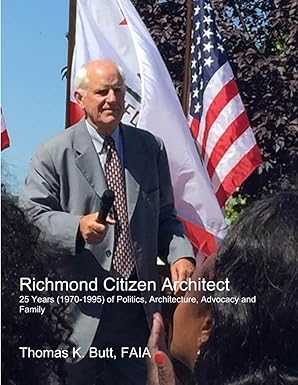 Newcomers to Richmond might believe that a City Council standing up to Chevron and other industries was a phenomenon of the 21st century that followed the rise of the Richmond Progressive Alliance (RPA) in Richmond in the first decade of the 2100s (Refinery Town: Big Oil, Big Money, and the remaking of an American City[1]and Winning Richmond: How a Progressive Alliance Won City Hall[2]).
Newcomers to Richmond might believe that a City Council standing up to Chevron and other industries was a phenomenon of the 21st century that followed the rise of the Richmond Progressive Alliance (RPA) in Richmond in the first decade of the 2100s (Refinery Town: Big Oil, Big Money, and the remaking of an American City[1]and Winning Richmond: How a Progressive Alliance Won City Hall[2]).
They might believe that the 2014 election, where all five Chevron-backed candidates lost, was a watershed moment. These are compelling narratives, but Richmond history is much more complicated, and they ignore the march of Richmond politics that began years before the RPA had even heard of Richmond.
I was there, and I started this chronicle as a summary, from my point of view, of Richmond politics from the early 1970s to 1995, when I was elected to the City Council. But those years were so intertwined with personal and business affairs that this turned into much more. There are three intertwined themes in this chronicle: Richmond government and politics, the Butt Family in Richmond and Interactive Resources.
This is a story about how Richmond changed and grew in the years from the early-1970s to the mid-1990s, including my personal experiences and observations. It is also about how our family and business grew along with Richmond during the same period.
Because Richmond has grown by 35,000 since 1980, we know that at least 35,000 people who live in Richmond today in 2021 were not here in the 1970s. Because of normal turnover, it is likely that more than half of Richmond’s current population is new since the 1970s and 1980s. There is little institutional memory of the far-reaching advocacy and public policy decisions of those years, the results of which we now take for granted.
As late as 1970, there was only 67 feet of Richmond’s 32 miles of shoreline legally accessible to the public. By 1990, 25 years later, that had increased to several miles, including over 3,000 acres of regional shoreline parks.
The 1970s saw the beginning of two flagship projects for Richmond, Marina Bay and Hilltop Mall. The former remains a thriving success while the latter has been all but abandoned. In the 1970s and 1980s, the seeds were planted to save Richmond’s iconic historic landmarks, including East Brother Lighthouse, Winehaven, the Ford Assembly Building and Point Richmond’s Hotel Mac.
Long before Black Lives Matter, Richmond was one of the first cities to set up a civilian police review commission to review complaints about excessive force and recommend policy matters to the police chief.
In researching this, I could not help but notice the extraordinary level and detail of media coverage in those decades compared to today. The local newspapers covered city and city council activities almost blow by blow with lots of analysis. Today, that is long gone.
I hope you find my narrative interesting and informative.
In 1999, Tom was elected a second time to the Richmond City Council, this time placing number two of the five members elected. In 2001, Tom ran for mayor, coming in second to Irma Anderson and beating out both Nat Bates and John Marquez. Tom had the lowest campaign cost per vote of any of the candidates.
In 2004, Tom ran for a third term on the City Council, becoming the top vote getter with more votes than anyone ever in a Richmond election.
In 2008 and 2012, Tom won a 4th and 5th term on the City Council, and in 2014, successfully ran for mayor, beating out two other candidates with a majority vote.
As a part of his City Council and mayoral duties, Tom joined the boards of multiple regional and statewide agencies including CivicWell (formerly Local Government Commission), Bay Conservation and Development Commission (BCDC), Contra Costa Transportation Authority (CCTA), Association of Bay Area Governments (ABAG) Executive Committee, Contra Costa Local Agency Formation Commission (LAFCO) West Contra Costa Transportation Advisory Committee (WCCTAC), Contra Costa Mayors Conference, MCE Clean Energy, League of California Cities, and U.S Conference of Mayors. He chaired CivicWell (formerly Local Government Commission), CCTA, MCE, LAFCO and Contra Costa Mayors Conference.
Tom was the founding director of Rosie the Riveter Trust, the nonprofit partner of the National Park Service for Rosie the Riveter WWII Home Front National Historical park and continues to serve on the board. He also founded the nonprofits East Brother Light Station, Inc., and Winehaven Trust. He serves on the board of the Sierra County Historical Society.
Acting through Rosie the Riveter Trust, Tom he raised over $11 million in grants and tax credits for rehabilitation of the Maritime Child Care Center and provided seven years of pro-bono project management services valued at over $500,000.
Beginning in 1995, Tom served 28 years on the Richmond City Council, the last eight of which were as elected mayor. He termed out in 2023 and left electoral politics. He holds the record as the longest continuous serving city council member in Richmond history.
During Tom’s City Council service, the population of Richmond grew by 25,000 from 90,000 to 115,000.
Some highlights of Tom’s service include:
Energy and Sustainability
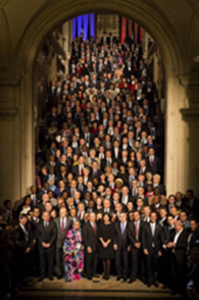
Climate Summit (COP21) for Local Leaders Paris, France, 2015
Tom authored or cosponsored legislation and policies that made Richmond a leader in the fight against global warming. He led Richmond into joining MCE Community Choice Energy, California’s first Community Choice Aggregation JPA. Richmond was the first MCE expansion community outside Marin County, and MCE went on to serve four counties and half a million customers with an annual budget of half a billion dollars. Tom represented Richmond on the board of MCE or over 12 years, and completed his final term as chair of the board. During this time, MCE built a 10.5 megawatt solar farm in Richmond that provides 7 percent of the electrical power load in Richmond.
Tom represented MCE at the 2025 United Nations Paris Climate Accords (COP21).
Historic Preservation
In 1973, Richmond was a blue-collar town in economic and population decline after closure of the world’s largest WWII shipyard (747 ships launched) at the war’s end. The City was cash poor but rich in history and historic structures that had helped shape that history. City leaders were not interested in the past; they wanted to bulldoze it and move to a better future. Much of the industrial infrastructure associated with the shipyards remained but was neglected and endangered.
Butt saw a way to market historic preservation to skeptical city leaders as an economic development tool, encouraging them to consider embracing it, not so much to preserve the past, but to create a more prosperous future.
Butt moved Richmond from a city with no preservation agenda to a recognized national leader. Butt’s effectiveness has not been in a single field or discipline, but through the integration of multiple skills and legislative and leadership positions that served as force multipliers. Butt used his knowledge and experience as a preservation architect to enhance and inform his ability to make a profound difference as a legislator and municipal leader. His historic preservation legislation developed for Richmond became an example for similar legislation statewide and nationally. Butt’s pioneering success in lighthouse preservation became the basis for a new nationwide Coast Guard policy.

Secretary of the Interior, Sally Jewell visits Rosie the Riveter WWII Home Front National Historical Park
Playing a key role in bringing Rosie the Riveter WWII Home Front National Park to Richmond, Butt made multiple trips to Washington D.C. to meet with the director of the National Park Service, top level Park Service staff and a Congressional committee. To save the former Ford Assembly Plant, Butt traveled to Washington D.C .to meet with the director of FEMA and top- level FEMA staff. Subsequently, National Park Service directors and secretaries of the Interior have traveled to Richmond to visit Rosie the Riveter WWII Home Front National Historical Park, hosted by Butt, in his roles as mayor of Richmond and board member of Rosie the Riveter Trust.
Much of Butt’s work reflects the National Trust for Historic Preservation’s National Impact Agenda. Focusing on Richmond, CA, a low-income, minority and underserved community that Finder declared “the most diverse city the U.S” in 2021, Richmond and Butt’s projects are known for their inclusiveness and commitment to equity. Rosie the Riveter Trust, founded by Butt, underwrote the initial employment of Betty Reid Soskin,
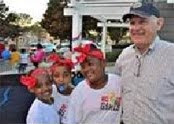
Tom at the Rosie the Riveter Rally in Richmond
who later at age 100 (now 103) became famous as the oldest ranger in the National Park Service, telling a truer history of the home front, the story of African Americans.
For East Brother Light Station rehabilitation, Butt was awarded the U.S. Coast Guard Meritorious Public Service Award, and the project was awarded a National Trust for Historic Preservation Honor Award and the U.S. Department of Transportation Award for Outstanding Public Service to Transportation and Historic Preservation.
In 2024, Tom received the 2024 Louise du Pont Crowninshield Award at the National Trust for Historic Preservation PastForward annual conference in New Orleans, October 28, 2024.
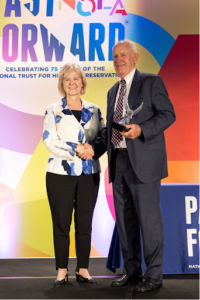
Louise du Pont Crowninshield Award: Thomas K. Butt (Richmond, CA). For over 50 years, Tom Butt, the founding principal and president of Interactive Resources, has made a significant national impact on historic preservation through his work as a legislator, mayor, architect, author, volunteer, developer, and activist. His pioneering success in lighthouse preservation became the basis for a new nationwide Coast Guard policy. For his role in founding Rosie the Riveter Trust, the nonprofit partner of Rosie the Riveter WWII Home Front National Park, Butt brought national recognition to American WWII workers, significantly including women and minorities. He transformed Richmond from a town in decline with no preservation agenda, to a recognized national leader in preservation that has revitalized the city.
The Louise du Pont Crowninshield Award is the National Trust for Historic Preservation’s highest national recognition. The award is made with the greatest care and only when there is indisputable evidence of superlative achievement over time in the preservation and interpretation of our cultural, architectural or maritime heritage, including buildings, architecture, districts, archeology, cultural landscapes, and objects of significance in the history and culture of the United States.
Read “A Life in Service to Preservation“, a reflection from Tom Butt, the 2024 reciepient of the Louise du Pont Crowninshield Award.
Interactive Resources
Interactive Resources was founded in 1973 during the “first energy crisis” precipitated by a Middle East oil embargo. The original partners of the firm, including founder Tom Butt, plunged into architectural projects that demonstrated innovative ways to save energy.
Some of the first homes in the Bay Area to incorporate active and passive solar energy applications were designed by Tom Butt and his partners at Interactive Resources. This set the pace in California in the years immediately following the energy crisis of 1973, influencing subsequent state energy conservation legislation and speeding the incorporation of energy conservation considerations into the mainstream of California architectural practice.
In 1975, Tom Butt and Interactive Resources organized and implemented the first statewide California Solar Energy for Buildings Conference, repeated in 1976 and 1977 with hundreds of building industry professionals attending.
In 1976, Tom Butt erected at his Point Richmond home the largest wind generator in California and the first to feed power into the PG&E grid. Fully instrumented by PG&E, it became a research project that paved the way for commercial wind power in California.
Until well into the 1980’s Interactive Resources remained a leading consultant in alternative energy applications and energy conservation in building, designing hundreds of projects incorporating passive and active solar heating and cooling, including six U.S. Government-sponsored grants for research or demonstration projects in solar energy, including the AIA Research Corporation Grant (sponsored by HUD) for Phase II Development of Energy Performance Standards for New Builders, 1978, and the Willow Park II Community Center Case Study, a DOE Research Project, 1983.
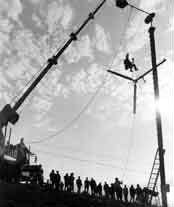


Tom began working in the architecture and engineering profession part time in high school and his first full-time architectural employment in the private sector was with the firm of Edward Durell Stone in Palo Alto in 1967-68 and 1970. He worked for a short time for the firm Mayhew & Thiederman in San Francisco, designing Kaiser hospitals before going to graduate school at UCLA in 1971.
The original concept of the firm’s founders was to create a tightly-knit, multidisciplinary, full-service organization – hence the name “Interactive Resources.”
Today, the organization lives up to that name, providing multidisciplinary services or a wide variety of projects and clients.
Tom is licensed as an architect in several states and as a general contractor in California. He has been previously licensed as a real estate broker in California and has substantial education and experience in real estate development and real estate economics.


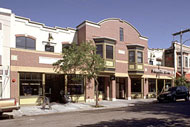
Tom Butt is a recognized expert in the field of building diagnostics — the art and science of investigating building problems and failures, such as leaks, structural collapse, mold damage, wood decay and water vapor damage. Many diagnostic assignments are related to construction defect litigation, and Tom has served as an expert witness on hundreds of such cases. Interactive Resources not only provides the investigation of construction defects; the firm often provides the design and construction administration for repairs.
Tom has written numerous articles on construction technology and has authored or co-authored a number of national construction standards under the auspices of ASTM (American Society for Testing and Materials), where he serves on several committees and choirs several task groups.
Tom Butt continues a long interest in historic preservation.
With Tom as principal in charge or project manager, Interactive Resources has completed more than 100 projects involving restoration or rehabilitation of historic structures, many of which are listed on the National Register of Historic Places.
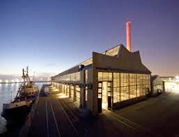
Interactive Resources successfully nominated the Ford Building to the National Register of Historic Places.
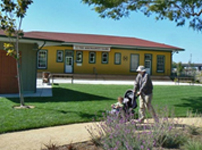
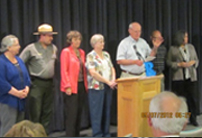
Tom has lectured widely on historic preservation practice to groups including the National Trust for Historic Preservation Annual Convention, the Monterey Design Conference, and many civic clubs and organizations.
Under Tom’s direction, Interactive Resources has prepared and administered numerous successful grant applications for historic preservation projects and National Register Nominations.